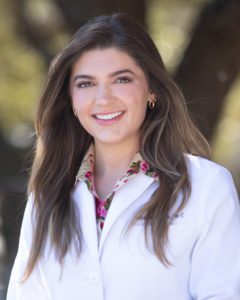 Skin cancer can be a serious condition, especially if it is not treated early on. Fortunately, many cancerous melanomas tend to differentiate themselves from harmless moles. Many melanomas are asymmetrical, have unusual borders and colors, are larger in size, and are likely to change their size and appearance over time. Here is an overview of the most common things to look for that differentiate melanomas from average moles:
Skin cancer can be a serious condition, especially if it is not treated early on. Fortunately, many cancerous melanomas tend to differentiate themselves from harmless moles. Many melanomas are asymmetrical, have unusual borders and colors, are larger in size, and are likely to change their size and appearance over time. Here is an overview of the most common things to look for that differentiate melanomas from average moles:
Asymmetry
Melanomas tend to stand out from regular moles because they are often asymmetrical and irregularly shaped. Many harmless moles are relatively round to oval and tend to have a mirror image when an imaginary line is drawn through the mole. However, drawing an imaginary line through a lesion that has a high probability of being cancerous will show differences on either side of that line.
Border
Moles often have relatively smooth, even edges, while melanomas can be much more irregular. In addition to asymmetrical shapes, these marks tend to have notched, scalloped, blurry, or other rough edges that do not form a smooth border with the surrounding skin. They can also pull away from the skin more than moles and become rougher or bumpier overall, especially on the edges. This can be a particularly reliable early sign of skin cancer, as unusual borders are often the most prevalent when the melanoma emerges and is just starting to grow.
Color
Color can be another major indicator that a mark may require further attention. Most harmless moles tend to be one to at most two relatively moderate shade(s) of brown throughout the entire lesion, while melanomas often consist of multiple colors. Melanomas are more likely to consist of a variety of shades of light and dark brown and may include tan or black patches. Red, blue, and other colors that are typically not seen in moles can also appear in cancerous marks.
Diameter
Most moles stay quite small, but skin cancers can grow much larger. Lesions that are larger than 1/4 inch (6 millimeters), or larger than the approximate diameter of a pencil eraser, are somewhat more suspicious for skin cancer, while most harmless moles are smaller. However, early melanomas can be smaller than these guidelines, and any small marks that match other common signs of skin cancer (such as those listed above and below) should also be taken into consideration. Natalie Gibson, PA-C at Sanova Dermatology also adds that “the “ugly duckling” sign is important. If it doesn’t look like anything else on your skin it’s a good idea to have it looked at by a professional for a potential biopsy”.
Evolution
Finally, marks that continue growing or changing over time may indicate possible skin cancer. While regular moles usually don’t disappear, they are also unlikely to get larger or otherwise evolve, particularly in adults. Melanomas are more likely to keep growing, and they can also change colors and shapes, bleed, become crusty, or evolve in other ways. This criteria is especially important if you notice new skin marks that evolve quickly.
At Sanova Dermatology, we prioritize helping our patients take steps to avoid skin cancer and other serious skin conditions, as well as to recognize and act upon possible signs of skin cancer as early as possible. Although none of these signs automatically indicate skin cancer, lesions that meet these guidelines should be considered potentially serious and evaluated as soon as possible to receive a diagnosis while they are easier to treat if needed. Contact us today with any questions you have about common signs of skin cancer or to schedule an appointment.
More About The Editors
 Aron Gewirtzman, MD
Aron Gewirtzman, MD
Aron Gewirtzman, MD was born and raised in Fort Lauderdale, Florida. He attended college at Boston University where he graduated magna cum laude and was selected as the graduation speaker for his biology department. He continued at Boston University for medical school before moving to Virginia for an internship at Riverside Regional Medical Center.
Dr. Gewirtzman is a board-certified dermatologist who performs medical, surgical, and cosmetic dermatology, as well as serves as an investigator for clinical studies.
Learn more and schedule an appointment
Natalie Gibson, MPAS, PA-C

Natalie Gibson, MPAS, Board Certified Physician Assistant, graduated from The University of Texas Medical Branch where she earned her Masters in Physician Assistant Studies with Honors. Prior to obtaining her masters, Natalie attended The University of Texas at Austin where she earned her Bachelor of Science degree in Nutritional Sciences. She was inducted into many honor societies throughout her time at UT.
Natalie is currently seeing both medical and cosmetic patients at Sanova Dermatology.
